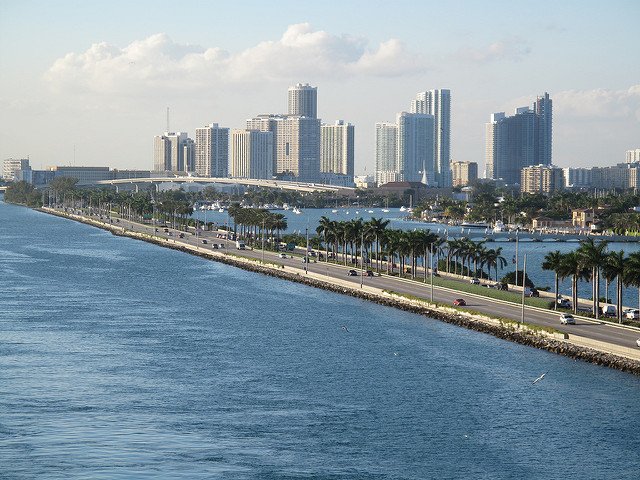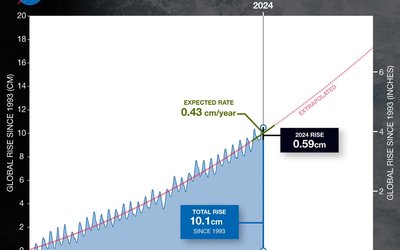Coastal erosion and coastal floods
Tenfold reduction of global flood risk: it pays of to raise the dikes when sea level rises
September 4, 2018

Photo: Miami is one of the cities where sea level rise will strongly increase coastal flood risk (photo: Matthew Hurst, www.flickr.com)
What if we do succeed in restricting warming at 1.5°C or 2°C, following the Paris Agreement? What will be the impact on sea level rise and coastal flood risk? This was studied for projections focused on 2100. A distinction was made in two scenarios: a scenario with no additional adaptation that keeps dike heights constant at the current level, and a scenario with business-as-usual adaptation where the standard of protection is updated every five years and dike heights are raised to cope with rising sea levels and changes in population density. For the latter, an increase of global population was assumed until mid-century, reaching approximately 9 billion people before slightly declining.
Global sea level rise by 2100
The height of sea level rise at the end of this century depends on the moment when the 1.5°C and 2°C warming levels are reached (and kept constant until 2100). The sooner these levels are reached, the higher sea levels will rise. All in all, according to this study, median sea level rise by 2100 is up to 52 cm and 63 cm for 1.5°C warming and 2°C warming, respectively. These levels are much lower than median sea level rise under a high-end scenario of climate change, which is projected to be 86 cm according to this study.
Annual sea flood costs by 2100
Without additional adaptation to sea level rise, projected global annual sea flood costs by 2100 are US$ 10.2 trillion per year (1.8% of GDP) at 1.5°C sea level rise and US$ 11.7 trillion per year (2.0% GDP) at 2°C sea level rise. If we fail to meet these Paris Agreement targets, and median sea level rise reaches 86 cm, global annual flood costs are projected to be US$ 14.3 trillion per year (2.5% of GDP).
With adaptation, costs could decrease to US$ 1.1 trillion per year (0.2% GDP) by 2100 for both 1.5°C and 2°C sea level projections, a reduction by a factor of 10. A similar reduction is reached under the high-end scenario of climate change: adaptation would strongly reduce total global annual flood costs from US$ 14.3 trillion per year to US$ 1.7 trillion per year. Thus, adaptation could greatly reduce flood costs, potentially by an order of magnitude and regardless of the future climate scenarios.
Source: Jevrejeva et al., 2018. Environmental Research Letters 13.








